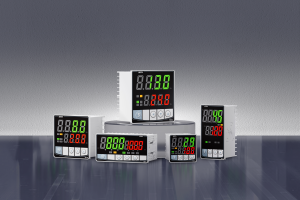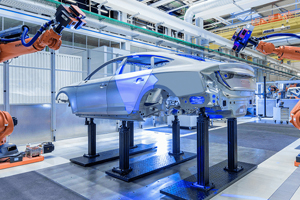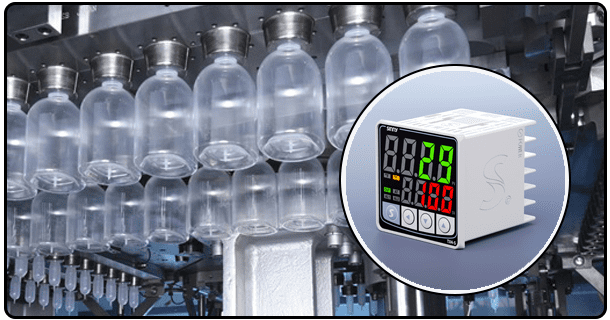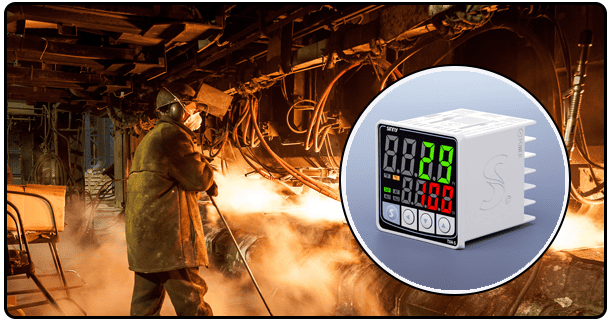Tuning Guide & Troubleshooting
Our comprehensive guide will help you set up and tune your PID controller. Install, configure, tune PID, and learn how to troubleshoot common problems for accurate temperature control.
1. Introduction: Understanding PID Temperature Control
Precision temperature control is essential in many applications. These range from industrial and scientific processes, to hobbies like electronics and cooking. Among the most effective methods for achieving this level of control is the Proportional-Integral-Derivative (PID) temperature controller. The device uses a complex control algorithm that maintains the desired setpoint temperature with astonishing accuracy and stability. PID temperature controllers continuously measure the temperature difference between current and target temperatures, then regulate the output of heat accordingly. The guide provides a step-by-step, comprehensive procedure to set up a PID controller. It covers the components needed, installation procedures, configurations, tuning, basic troubleshooting, and critical tuning. This article is for engineers and hobbyists alike. It will give you the information you need to successfully implement temperature control. To harness the full power of PID for temperature control, it is important to understand the fundamental principles.
2. The Core Components
The success of a PID system depends on the Xie Tong, or synergy (coordination) between several components. Before beginning the actual setup or configuration, it is important to understand each component. As the central component, the PID Controller, is the brain behind the system. The hardware is usually a microcontroller that processes the input signals, runs the PID algorithm and produces output signals. The sensors provide the feedback loop, by measuring and sending the data from the controller. Thermocouples and resistance temperature detectors (RTDs) are two common temperature sensors. Each has its own characteristics, and is suitable for different temperatures and accuracy needs. Controller outputs are directed at a heating element or heater, which alters temperature in the process. It is important to understand the thermal properties of the system or material being heated, as well as its nature. The role of auxiliary components such as power supplies, insulation, and other auxiliary materials is also important in the performance and reliability of the system. This familiarity will help you to perform the next steps in setup.
3. Installation Pre-requisites
Installation of PID controllers requires preparation, and safety protocol adherence. Preparing all the necessary materials and tools in advance will streamline and reduce delays. Electrical safety is essential when working with heating and electrical elements. It is important to understand wire connections and use appropriate insulation. You should also be aware of the potential dangers associated with heat and power sources. Standard screwdrivers, wire strippers and possibly a soldering or crimping iron are required depending on your PID controller's connectors and wiring. Materials that are essential include the thermocouple (or RTD) temperature sensor, the device or heating element to be controlled by the PID controller (like Solid State Relay or a Resistance Heater), and finally the load. It is also important to have an appropriate power source that can power both the heater unit and PID controller. Before installing the system, you must first gather the necessary materials and tools.
4. Installing the Physical Components
During the physical installation stage, the hardware is connected according to its design. It is important to pay attention to every detail to guarantee safety and proper function during this phase. Start by placing the PID unit in an appropriate and stable locati0n. This should be in a locati0n that is easy to access for monitoring and configuration, but protected from physical shocks, direct sun, or other environmental factors which could affect sensor readings. The next step is to connect the temperature sensor. Connect the probe of the temperature sensor or the element at the point where the accuracy is most important. It may be necessary to insert an RTD or secure a thermocouple. Connect the sensor wires with the input terminals of the PID controller. Be sure to pay attention to the diagram in the manual of the controller. Incorrect connections may lead to incorrect readings, or even damage the equipment. Connect the control or heater device simultaneously. This usually involves connecting the heater, or output interfaces (such as an SSR relay or relay), to the correct output terminals of the PID control. The power source that powers the heater must be connected separately to the power supplied for the PID Controller. It is important to check the connections against the wiring schematic before powering up.
5. Initial configuration in the PID software/interface
The next step is to configure the software of the PID controller or the user interface. The controller will be able to correctly interpret the sensor data and work within desired parameters after this initial setup. The PID controller must be powered on. The menus of most devices allow you to perform the initial configuration using buttons or touchscreen interfaces. If multiple choices are offered, you may have to choose a language default or change the display settings. The selection of the right sensor is a fundamental first step. Many modern PID controllers require that you explicitly state whether a type of thermocouple is connected (such as Type J, Type K, or T). RTDs (like Pt100), which have different signal processing, are also connected. Advanced controllers might even request the type of RTD or thermocouple. It is important to configure this parameter accurately in order to get reliable readings. Set the temperature units you want for display and control. This is usually Celsius (degC), or Fahrenheit, depending on the application and your preferences. Once you have completed these configuration steps, the controller will be ready to interpret sensor data and generate control signals.
6. This is the most important step in tuning your PID.
The PID controller settings are only the first step.This will ensure stable operation, minimal overshoot and a quick settle time. It is important to understand these parameters: the Proportional (P) term acts on the error, which is the difference between setpoint temperature and measured temperature. Higher P values result in stronger responses to errors, but they can also lead to oscillation or instability. By accumulating previous errors, the Integral term I eliminates error in steady state over time. Overuse can slow down the response. The derivative term (D), which predicts errors in the future based on how much the error has changed, can help dampen oscillations while improving stability. However, it is sensitive to noise. The tuning methods range from the Ziegler Nichols method which is more complicated and requires the finding of the gain, period, etc. to the manual method or iterative technique, suitable especially for beginners. Manual tuning involves selecting a value P that is lower than oscillation, and increasing the value until it reaches the desired oscillation. Then, a value P slightly below the point of oscillation can be selected. Then, the Integral is added and increased slowly until the error at steady state is eliminated. A small amount of derivative action may be added at the end to reduce any oscillations. The controller model's specific resources can offer valuable advice tailored to it.
7. Test and Verification
After the tuning, you must test your PID configuration to ensure its stability and performance. The PID controller's interface allows you to set the temperature that you want. Give the system enough time to stabilize at this temperature and reach it. Watch the temperature display on the monitor or controller. Check for the following key features: First, determine if the system accurately reaches the temperature setpoint without overshooting - an excessive deviation above the target before stabilizing. Check for the steady-state-error - that is, the difference between setpoint temperature and actual temperature after the system stabilizes. This error should, ideally, be as small as possible. Thirdly, check the stability of temperature. Is it constant or is it oscillating (hunting?) around the setpoint excessively? The temperature profile of a well-tuned PID will be stable with minimal deviation. The tuning parameters should be reviewed if the performance observed is not satisfactory. Even minor adjustments can improve system behaviour. The PID controller's ability to control the load temperature is confirmed by this testing phase.
8. Troubleshooting common issues
Even with careful set-up and tuning, temperature control PID systems may occasionally have operational problems. It is important to identify common issues and potential causes. This will allow you to resolve them quickly and effectively, and ensure that your system continues performing reliably. The temperature not reaching the setpoint is a common problem. The temperature may not reach the desired setpoint due to a miscalibrated or disconnected sensor, improper wiring (particularly heater connections), tuning parameters that are too conservative (lower P value), and faulty or underpowered heater elements. Heating can be hampered by a lack of thermal mass, or an inadequate load insulation. A common issue is oscillation, or instability. This occurs when the temperature fluctuates repeatedly between the setpoint and the ambient. It is usually a sign of excessive tuning (higher P values) or noise. Reduce the P value or increase the I value very slowly (if there is steady-state errors present). You can also adjust the D value to reduce oscillations. If the heater is cycling on and off rapidly, with large temperature changes, then the P value may be too high or the system could be sized incorrectly for the load. Sensor reading issues, like drifting values or incorrect numbers, require checking sensor connections, calibration status, placement accuracy and age. Verify that the PID unit is getting the right power and all connections are secured.
9.Conclusion
To successfully set up and operate a PID controller, you need to combine careful planning, accurate physical installation, an initial configuration that is correct, and meticulous tuning. The comprehensive guide outlines the steps that are required at each step of the process. From understanding the key components and prerequisites, to performing the crucial PID tuning and conducting thorough testsHowever, the basic principles are the same. For model-specific information and capabilities, we encourage our readers to refer to the manual that comes with their controller. For mastering PID control, it is important to keep learning. Referencing reliable technical sources and a continuous process of self-education are also valuable. You can create a PID system that is robust and efficient by following these guidelines, and maintaining an attentive, systematic approach.
- Agptek Temperature Controller - Precision Thermal Regulation for Differential Applications
- What is PID temperature controller?























